Pickles are an important dish in Japanese cuisine.
From the pickles and sauerkraut in Europe through to kimchi in Korea and chutney in India, there are many different types of pickles in the world, but no other country possess as rich of a variety of as Japan nor does any other country eat them at every meal. Reasons for this include the fact that region-specific ingredients developed due to Japan’s topography, which is long and narrow from north to south, as well as the influence of Zen, which was introduced from China in the around the 12th and 13th centuries.
As Buddhism forbids the killing of animals, Zen monks ate a simple vegetable-based cuisine known as “shojin ryori.” Pickles, in particular, developed diversity as a vegetable-based preserved food that prevented malnutrition and starvation during the winter.
In addition, while conventional Buddhism preached salvation in the next life (after death), Zen practitioners conducted training to “live better in this life.” And this led to a major change in worldly values regarding food. The goal of living healthily in this life gave rise to a diet rich in nutrients that contained a well-balanced mix of vegetables, soybeans, sea weed, etc. In addition, cuisine and diet themselves were also considered an important form of training in Zen. “Feel grateful toward the bounty of nature and maximize the natural flavors of the ingredients.” “Prepare food with empathy and devotion toward those who will partake of it.” – These are aspects of the teachings of Zen. Pickles are more than just a type of food. They are a heartfelt gift from Zen priests packed with wisdom and innovations.
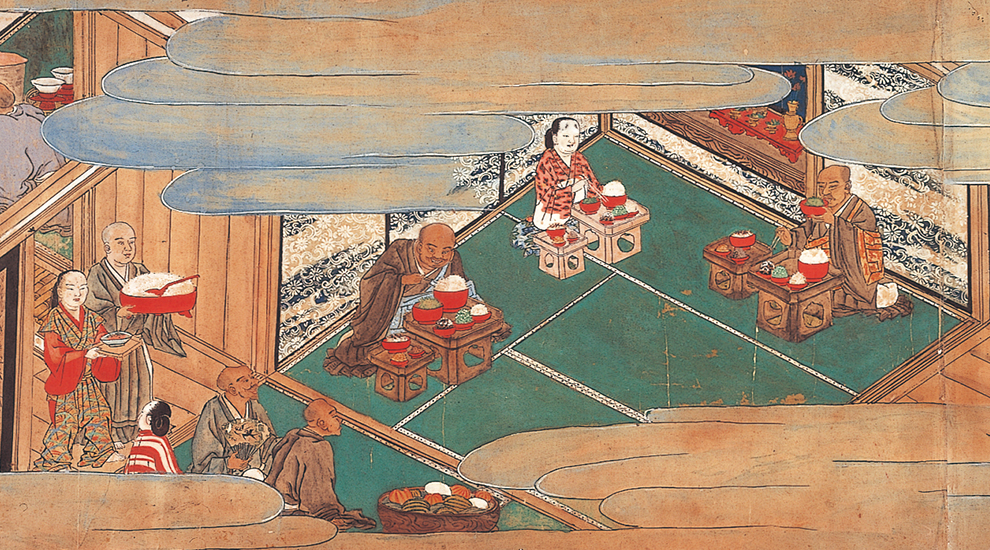
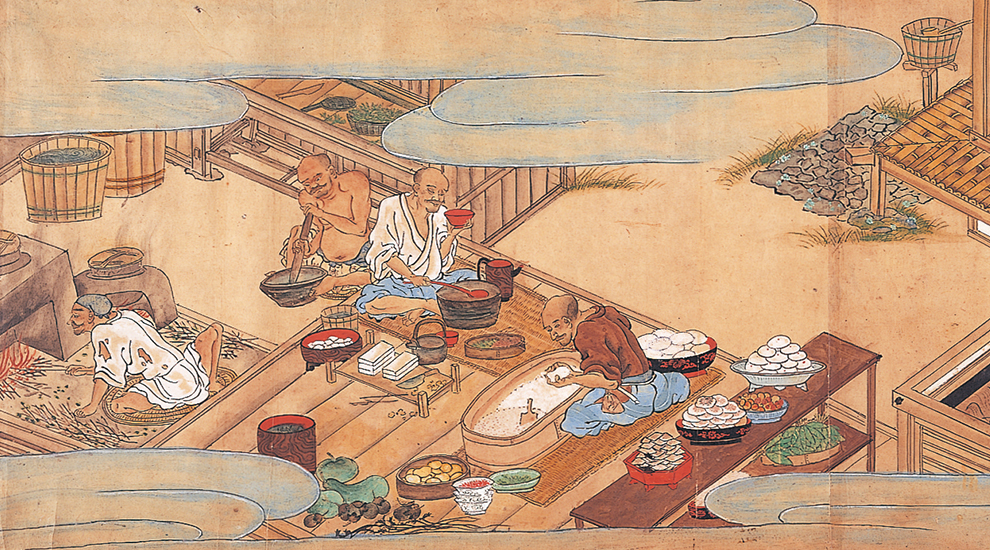
Replica [Sihonchakusyoku-Shuhanron emaki] (national「Agency for Cultural Affairs」)
From a daily staple to a health food. And onward to new ways of being enjoyed.
“Japanese Cuisine,” the traditional diet of the Japanese people, has been registered by UNESCO as an intangible cultural heritage. It is characterized by integrating a meal composition known as “ichiju sansei (one soup and three side dishes).” In other words, it is an approach that makes rice more enjoyable to eat and enables a well-balanced intake of nutrients by combing the main staple of rice with a soup dish, three side dishes and pickles. The rice and pickles are so familiar and essential in the Japanese diet that they do not even need to be mentioned in the phrase. The ichiju sansai style meal originated more than 1,000 years ago. It then developed throughout the Middle Ages while integrating aspects of Zen’s shojin ryori cuisine and the culture of the tea ceremony. Now, this style has been adopted for meals in all occasions from home cooking to banquets for entertaining guests. Meals are finished with a final course of “rice and pickles,” and this gentle flavor also serves to calm and sooth Japanese people in body and mind. Pickles in recent years are highly rated for their rich nutritional value and are popular as a health food. In addition, domestic and overseas chefs continue to search for new potential in cuisine by using pickles as a flavor enhancer or ingredient. They can be eaten casually, and they are both nutritious and delicious. Japanese pickles are full of advantages, so please be sure to try them at your leisure.
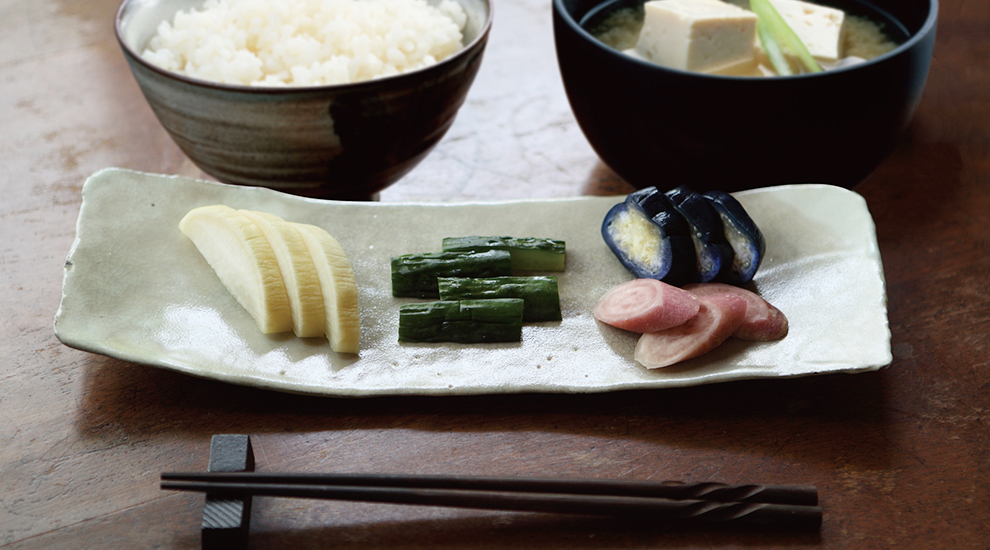
Types of pickles
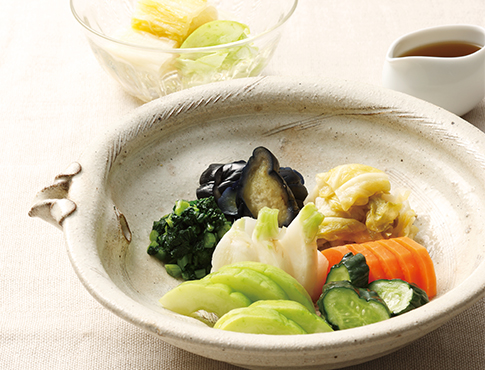
Nuka-zuke
Vegetables are pickled in fermented rice bran. There is a faint sour or acidic flavor.
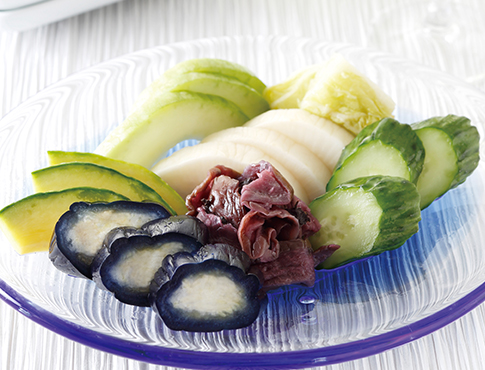
Assari-zuke (asa-zuke)
After pickling in salt, seasonings such as kelp are added. These may be eaten as a delicious salad.
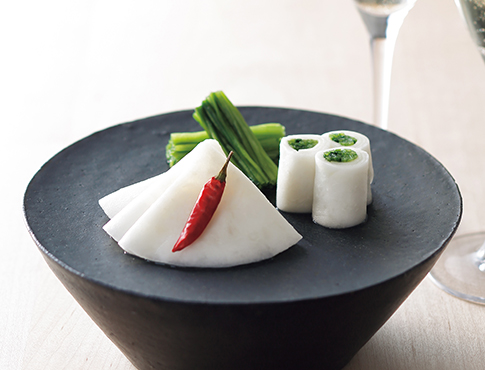
Senmai-zuke
A type of Kyoto pickle. Turnips are thinly sliced and pickled in vinegar with kelp and red peppers.
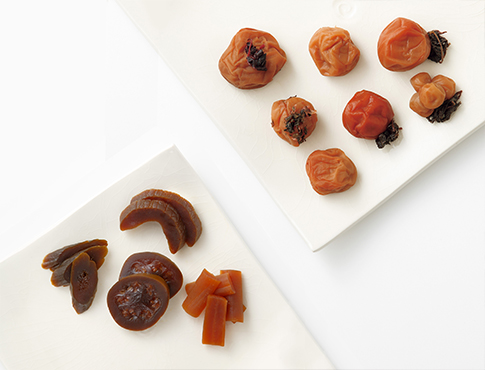
Umeboshi & Nara-zuke
Umeboshi are a sour-flavored pickles that are made by pickling plums in salt and perilla. Nara-zuke are made by pickling melons in sake lees. They have sake aroma and strong taste."A sour plum pickled with salt and shiso leaves(Japanese basil).
Seasonal items and vegetables – carefully-selected ingredients
In Japan, a wide variety of vegetables are harvested throughout the year. We pickle these vegetables in salt, kelp, bran, miso, yeast, spices, etc. The process of pickling concentrates the flavor of the vegetables and instills them with natural deliciousness.
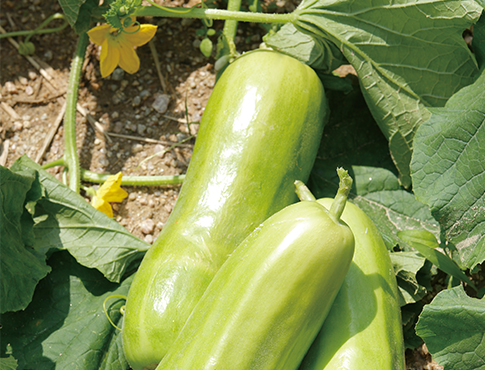
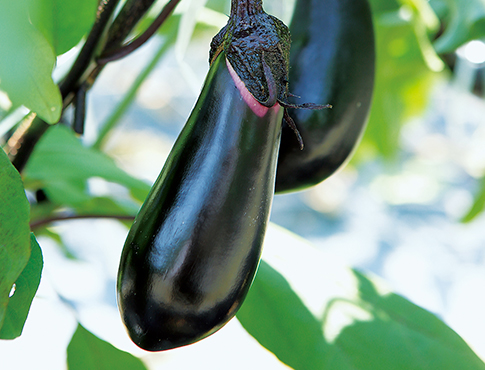
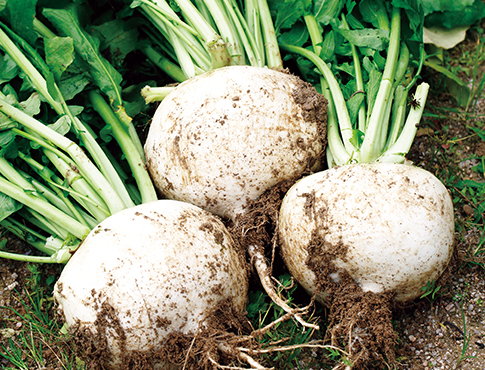
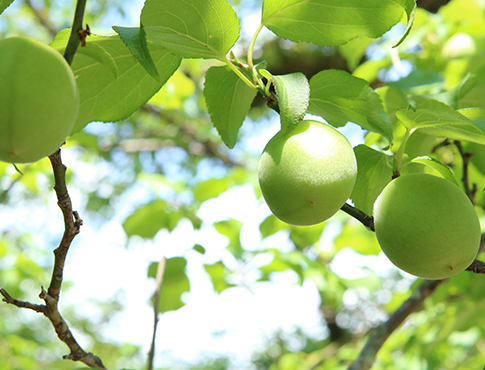
- Sorry, the online shop is
Japanese only.

